
Vitellaria paradoxa, commonly known as shea tree, shi tree, or vitellaria, is a tree of the family Sapotaceae. It is the only species in the genus Vitellaria, and is indigenous to Africa.

The Pieridae are a large family of butterflies with about 76 genera containing about 1,100 species, mostly from tropical Africa and tropical Asia with some varieties in the more northern regions of North America. Most pierid butterflies are white, yellow, or orange in coloration, often with black spots. The pigments that give the distinct coloring to these butterflies are derived from waste products in the body and are a characteristic of this family. The family was created by William John Swainson in 1820.
Bordaia is a genus of moths of the family Hepialidae. There are five described species, all endemic to Australia.
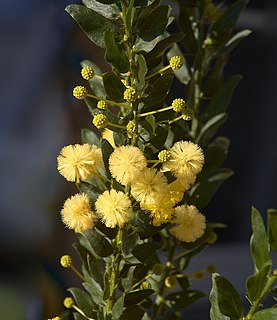
Acacia paradoxa is a plant in the family Fabaceae. Its common names include kangaroo acacia, kangaroo thorn, prickly wattle, hedge wattle and paradox acacia.
Teratauxta is a genus of moths of the family Crambidae. It contains only one species, Teratauxta paradoxa, which is found on Sumatra.
Saigonita is a monotypic moth genus of the family Noctuidae. Its only species, Saigonita paradoxa, is found in Vietnam. Both the genus and species were first described by Sergius G. Kiriakoff in 1971.
Marbla is a genus of moths in the subfamily Lymantriinae. The genus was erected by Charles Swinhoe in 1903.
Neoliparina is a monotypic moth genus in the subfamily Lymantriinae. Its only species, Neoliparina paradoxa, is found in the Central African Republic. Both the genus and the species were first described by Schultze in 1934.
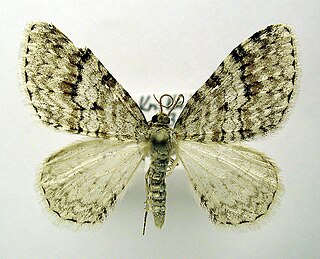
Venusia is a genus of moths in the family Geometridae erected by John Curtis in 1839.

Tegeticula is a genus of moths of the family Prodoxidae, one of three genera known as yucca moths; they are mutualistic pollinators of various Yucca species.
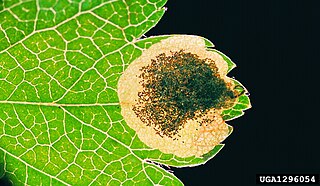
Stigmella paradoxa is a moth of the family Nepticulidae. It is found in most of Europe, east to the Near East and the eastern part of the Palearctic realm.

Hyposmocoma paradoxa is a species of moth of the family Cosmopterigidae. It was first described by Lord Walsingham in 1907. It is endemic to the Hawaiian island of Kauai.

Eupithecia silenicolata is a moth in the family Geometridae. It is found from southern Europe and Morocco to western Asia, Iran and Pakistan. In the north, the range extends to southern Switzerland, Austria and northern Italy.
Gardinia paradoxa is a moth of the family Erebidae. It was described by Hering in 1925. It is found in Peru.
Nosphidia is a monotypic moth genus in the family Carposinidae. It contains the single species Nosphidia paradoxa, which is found in Sri Lanka. Both the genus and species were first described by Alexey Diakonoff in 1982.
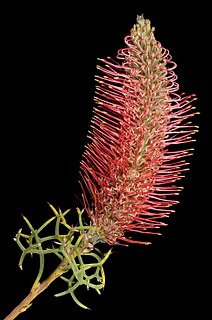
Grevillea paradoxa, commonly known as the bottlebrush grevillea, is a shrub of the genus Grevillea native to an area in the Mid West, Wheatbelt and Goldfields-Esperance regions of Western Australia.
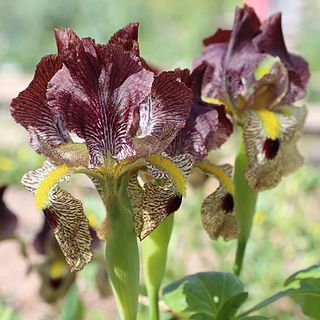
Iris paradoxa is a species of flowering plant native to western Asia. It has large upright petals and smaller lower petals, which is unique amongst most iris forms. They come in various shades from white, lavender, mauve, medium purple, violet, dark purple to black. It has a black or purplish black beard on the lower petals. It comes from the region of Transcaucasia, and is found in the countries of Iran,, Turkey, Armenia and in Azerbaijan.
Heterogynis paradoxa is a moth in the Heterogynidae family. It was described by Jules Pierre Rambur in 1837.
Meris paradoxa is a species of geometrid moth in the family Geometridae. It is found in North America.

Bartheletia paradoxa is a species of dimorphic fungus and is the only member of the genus Bartheletia. Bartheletia is the only genus in the family Bartheletiaceae, which is the only family in Bartheletiales, which in turn is the only order in the class Bartheletiomycetes.










